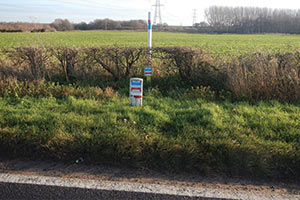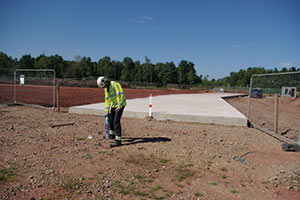What to consider before starting agricultural construction
Linewatch, the leading pipeline safety and awareness group, share their top tips to consider before embarking on any construction on the farm.
Construction work on a farm almost never stops and often takes place quickly. With so many issues to think about it can be a little daunting. With this in mind, we have created our top tips to remember before starting any agricultural construction project.
 Planning, demolition, and dismantling
Planning, demolition, and dismantling
Any project must start with planning, which could involve checking if your project needs PDRs (permitted development rights), which allow you to do certain types of construction without planning permission. The important thing to remember here is to check with your local planning office for any advice on what to do. If your project requires you to dismantle an existing building, it is important to ensure that you have arranged for the structure to come down in a safe way, preventing danger to you and any other structures close by.
If your project is more complex and involves any high-risk asbestos containment materials, for example asbestos insulation, you may need to use a licensed contractor. Never attempt to do this yourself as the risk of serious illness is very high without the correct removal equipment.
Searching for pipelines
Once the land is clear, you may think it’s time to begin construction. However, jumping straight in would be a mistake.
So much time is given to considering the obstacles above ground, but what’s below is possibly more important. With over 14,000 kilometers of buried gas and oil pipelines operated by Linewatch members running under agricultural land, as well as towns and cities, being in the vicinity of one is more common than you’d imagine. Striking one of these high-pressure pipelines will likely have a significant impact on the person doing the digging and the environment around it. Before starting any work, check for pipeline markers on site or use LSBUD’s free online portal to check for pipelines on your land.
If there is one present, you will need to speak to the pipeline operator, who can be contacted directly, or via LSBUD. They can then meet you on-site and locate the route of the pipelines through your land, explain the safest way to undertake these works, and even stay on-site to supervise if required. With some of these pipelines just 3ft, or shallower, under the ground, this step cannot be overlooked.
If you do identify a pipeline, you should keep an open mind that it may affect your original plans. Buildings cannot be constructed within 3m of a pipeline, even if they’re temporary, as they must be always accessible for maintenance. Similarly, if you wish to build a car park, or other similar feature, you may not be able to do so directly over the route of a pipeline.
Accessibility for vehicles
Having suitable access may seem like an obvious step, but it is surprising how often it is not considered before the project begins. Construction then must be halted as appropriate arrangements are made. As soon as you’ve confirmed the type of construction taking place on site, make sure that you plan the route delivery vehicles and construction machinery will need to take. If this step is ignored, your project will immediately be harder than necessary.
 The local landscape
The local landscape
Considering the look of the local area may be the last thing on your mind when starting a project on your farm, but it shouldn’t be. Many people see a local farm as a prominent feature within their local landscape and therefore the views into and out of the site must be accounted for. You must consider whether the building in question would make a positive contribution to the aesthetics of the surrounding area, particularly if using reflective materials or tall structures, for example silos.
Conclusion
Getting started on a new construction project on agricultural land does not have to be a daunting prospect. As long as you have considered the steps necessary and given time to ensure that they are properly completed, there should be no issues and these new buildings can be used as soon as possible. By simply considering these steps before you get started will prevent any unexpected problems in the long run.
For more information about Linewatch and the pipelines they protect, please visit www.linewatch.org.uk.
- Log in to post comments

